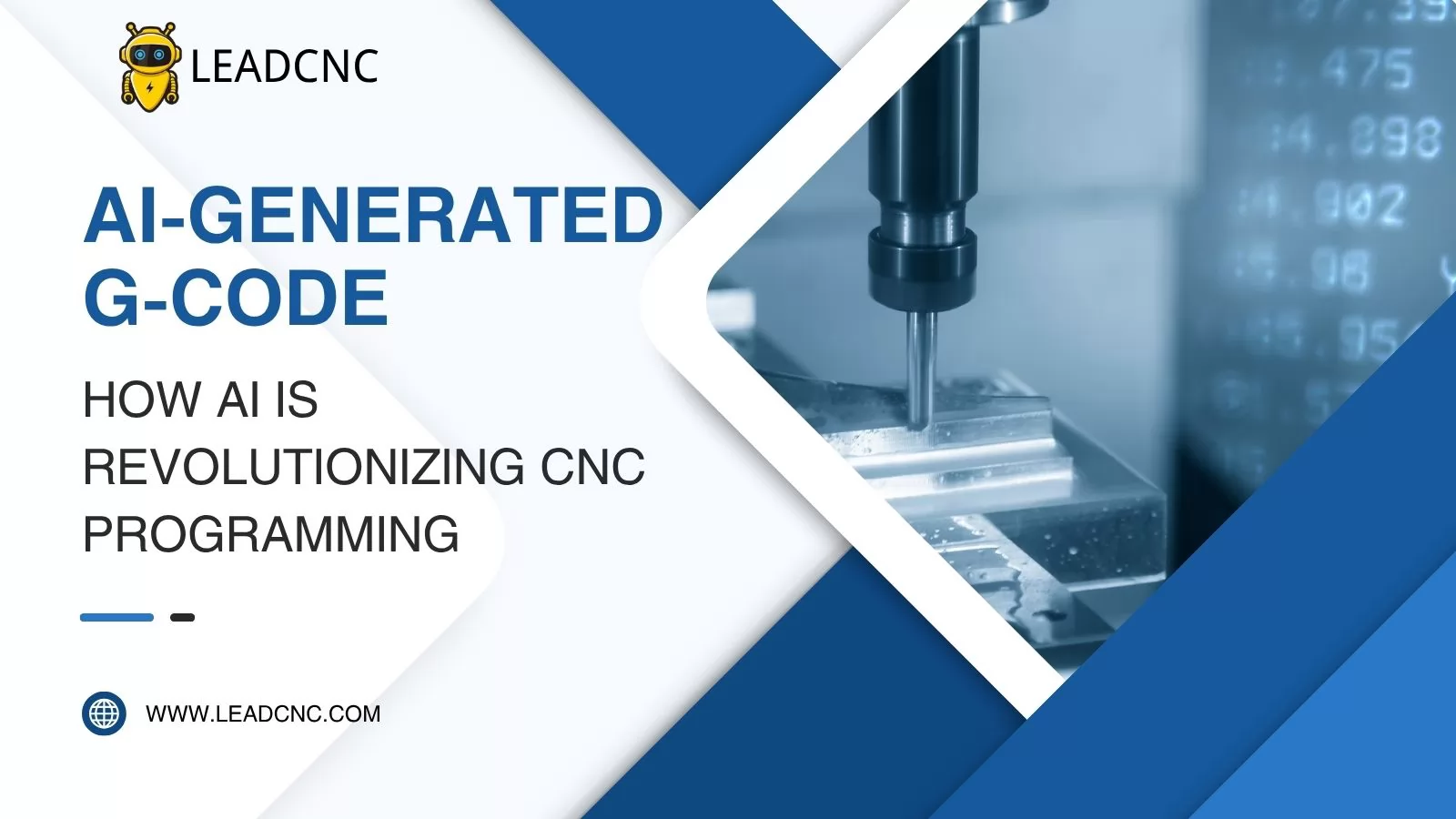
Computer Numerical Control (CNC) machining has long relied on a standardized language called G-code to communicate instructions to machines. G-code tells CNC machines where and how to move tools—defining paths, speeds, depths, and tool changes. This foundational technology has driven precision manufacturing in industries like aerospace, automotive, and medical devices for decades.
However, traditional CNC programming demands significant manual input and deep technical knowledge. Generating optimal G-code often involves trial-and-error, operator experience, and repetitive tasks. Enter AI-generated G-code—a game-changing innovation that combines artificial intelligence with advanced manufacturing processes to streamline, optimize, and automate CNC workflows.
This article explores how AI is transforming CNC programming through intelligent G-code generation, empowering machinists and engineers with unprecedented speed, accuracy, and adaptability.
Click to view more details
CNC (Computer Numerical Control) programming represents a cornerstone of modern manufacturing, enabling precise control over machinery to produce complex parts with high accuracy and repeatability. At its core, CNC programming involves creating instructions that dictate the movements, speeds, and operations of automated machine tools such as mills, lathes, routers, and plasma cutters. These instructions are typically encoded in a standardized language known as G-code, which serves as the lingua franca for CNC machines worldwide. This introduction delves into the fundamentals of CNC programming, the structure and syntax of G-code, its historical evolution, key applications, and the challenges inherent in traditional approaches—setting the stage for how artificial intelligence (AI) is poised to transform this field.
The origins of CNC programming trace back to the mid-20th century with the development of Numerical Control (NC) systems. In the 1940s and 1950s, pioneers like John T. Parsons and Frank Stulen at the Massachusetts Institute of Technology (MIT) conceptualized automated control for machining helicopter rotor blades, leading to the first NC machine in 1952 under a U.S. Air Force contract. These early systems relied on punched tape to input commands, a labor-intensive process prone to errors.
The transition to CNC occurred in the 1970s with the integration of microprocessors and computers, allowing for real-time editing, storage, and execution of programs. By the 1980s, CAD (Computer-Aided Design) and CAM (Computer-Aided Manufacturing) software emerged, bridging the gap between design and production. Today, CNC systems incorporate advanced features like adaptive control, tool monitoring, and integration with Industry 4.0 frameworks. This evolution has democratized manufacturing, reducing setup times from days to hours and enabling mass customization in industries such as aerospace, automotive, medical devices, and consumer electronics.
CNC programming begins with understanding the machine's coordinate system, typically Cartesian (X, Y, Z axes) for 3-axis machines, with extensions to A, B, C for rotational axes in multi-axis setups. Programmers must define tool paths—sequences of movements that the cutting tool follows to shape the workpiece—while accounting for factors like material properties, tool geometry, and machining strategies (e.g., roughing vs. finishing).
A typical CNC program includes:
Programmers often use CAM software like Autodesk Fusion 360, Mastercam, or SolidWorks CAM to generate these paths from 3D models, simulating operations to avoid collisions and optimize efficiency. However, manual editing is common for fine-tuning, requiring deep knowledge of machining principles to prevent issues like tool breakage or surface defects.
G-code, formally known as RS-274 or ISO 6983, is a modal programming language where commands remain active until overridden. It consists of lines (blocks) starting with an address letter followed by a numerical value, e.g., "G01 X10.0 Y5.0 F200". Key elements include:
G-code is machine-agnostic but often requires post-processing to match specific controllers (e.g., Fanuc, Haas, Siemens). Extensions like Heidenhain or Okuma dialects add proprietary features, complicating portability. For instance, a simple program to mill a square might look like this:
N10 G90 G54 G00 X0 Y0 Z10 ; Absolute positioning, work offset, rapid to start N20 M03 S2000 ; Spindle on clockwise at 2000 RPM N30 G01 Z-5 F500 ; Linear feed to depth N40 G01 X50 ; Move to X50 N50 G01 Y50 ; Move to Y50 N60 G01 X0 ; Back to X0 N70 G01 Y0 ; Back to Y0 N80 G00 Z10 ; Retract N90 M05 M30 ; Spindle off, end program
This brevity belies the complexity; errors in syntax or logic can lead to scrapped parts or machine damage.
CNC programming underpins a vast array of manufacturing processes. In aerospace, it enables the production of turbine blades with tolerances under 0.001 inches. Automotive sectors use it for engine components, while medical manufacturing relies on CNC for prosthetics and implants requiring biocompatible materials like titanium. Emerging fields like additive-subtractive hybrid manufacturing combine CNC with 3D printing for enhanced part integrity.
The global CNC market, valued at over $80 billion in 2023 and projected to exceed $120 billion by 2030, highlights its economic significance. Benefits include reduced labor costs, minimized waste through precision, and scalability for high-volume production. However, traditional CNC programming demands skilled operators—a shrinking workforce amid the "skills gap" in manufacturing, where over 2 million U.S. jobs may go unfilled by 2025 due to retiring experts and insufficient training.
Despite its advantages, manual or CAM-based CNC programming faces several hurdles:
These challenges create opportunities for innovation, particularly through AI, which can automate code generation, optimize parameters, and adapt in real-time—topics explored in subsequent sections of this article.
In summary, CNC programming and G-code form the backbone of automated manufacturing, evolving from rudimentary tape-based systems to sophisticated digital workflows. As industries demand faster, more efficient production, understanding these foundations is essential for appreciating AI's revolutionary potential in generating G-code intelligently and autonomously.
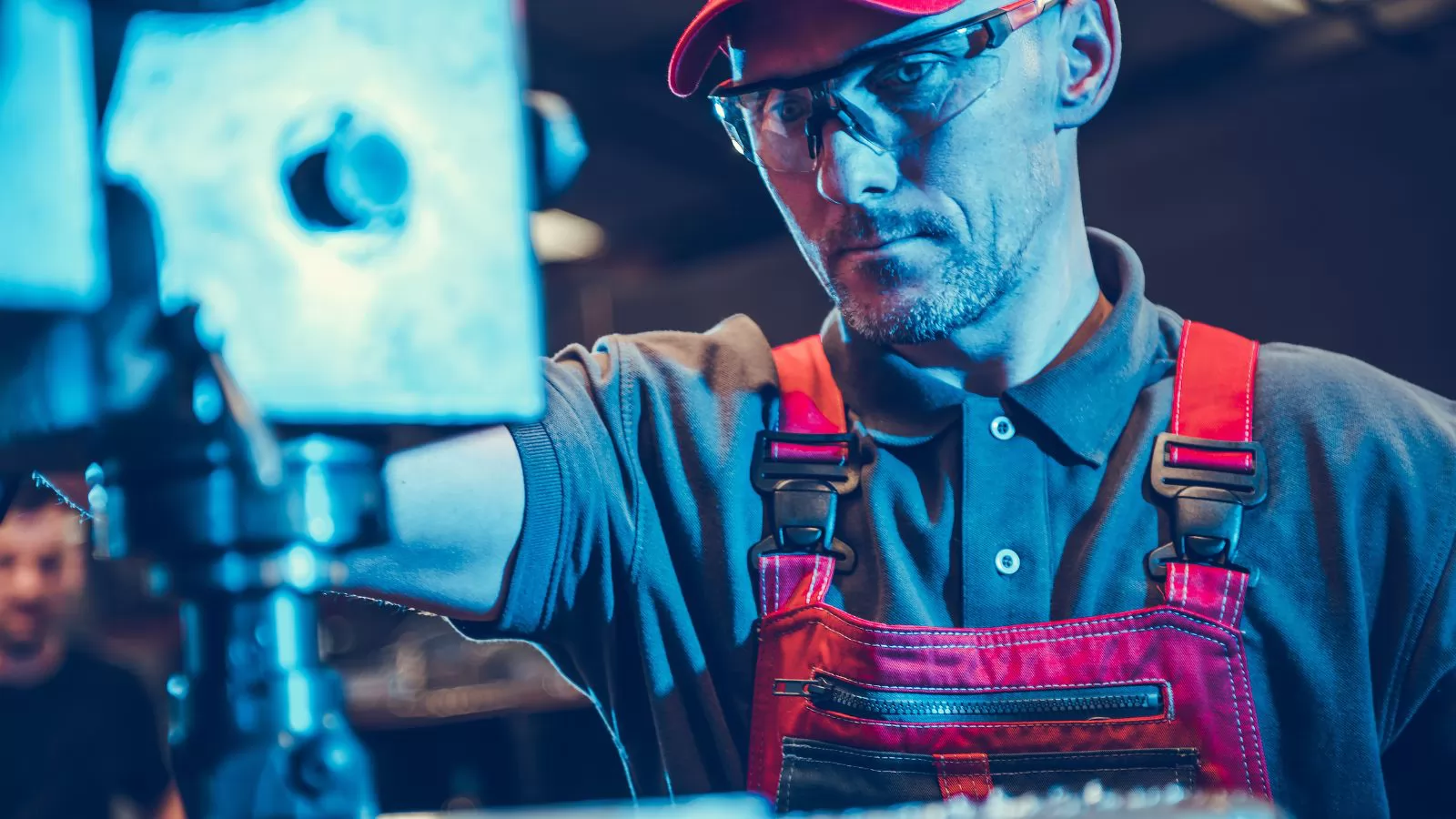
In the early days of CNC, machines required hand-coded instructions, a laborious and error-prone task. Over time, CAM (Computer-Aided Manufacturing) systems simplified this process, but it was still largely deterministic. The shift toward machine learning introduced the ability for software to learn patterns, adapt to new data, and optimize based on outcomes.
Today’s factories are increasingly smart and connected, integrating AI with robotics, sensors, and real-time data analysis. AI supports everything from predictive maintenance to quality control, and now it’s entering the domain of toolpath programming and G-code generation—bringing intelligence to one of the most technical aspects of machining.
Click to view more details
The integration of artificial intelligence (AI) into manufacturing has transformed the industry from labor-intensive processes to highly automated, data-driven ecosystems. This evolution spans seven decades, progressing from rigid rule-based automation to self-optimizing cyber-physical systems powered by deep learning, generative AI, and edge intelligence. Understanding this trajectory is essential to grasp how AI is now revolutionizing CNC programming through autonomous G-code generation. This section traces the complete timeline, pivotal technologies, key players, adoption patterns, and socioeconomic consequences.
The journey began immediately after World War II. In 1954, George Devol patented the first programmable robotic arm, commercialized as Unimate in 1956 and deployed on General Motors’ assembly line in 1961 for die casting and spot welding. These early systems were purely deterministic—no learning capability existed.
Parallel academic work laid AI foundations: John McCarthy coined “artificial intelligence” in 1956, and the 1968 Perceptron by Frank Rosenblatt introduced single-layer neural networks. In manufacturing, rule-based expert systems emerged—MYCIN (1972) for medical diagnosis inspired similar logic engines for process troubleshooting. IBM’s 1978 deployment of rule-based scheduling at semiconductor fabs marked the first large-scale industrial AI application.
The 1980s saw massive investment. Japan’s Fifth Generation Computer Project (1982–1992) allocated $400 million to logic-programming manufacturing systems. In the U.S., DEC’s XCON (1980) configured VAX computers, saving $25 million annually.
Manufacturing-specific platforms appeared: Intellicorp’s KEE, Teknowledge’s M.1, and Carnegie Group’s systems optimized steel production at Bethlehem Steel. However, brittle rule sets and exponential maintenance costs triggered the second AI winter (1987–1993), slashing funding by 80%.
Moore’s Law and cheaper sensors revived interest. Key breakthroughs:
Industrial applications multiplied: GE’s Brilliant Factory initiative (2009) used anomaly detection on turbine sensor data; Siemens’ 2008 neural-network-based predictive maintenance reduced unplanned downtime by 30% in European plants.
The 2011 Hannover Messe introduced “Industrie 4.0,” merging OT/IT with nine pillars: Big Data, IoT, Cloud, Additive Manufacturing, Augmented Reality, Autonomous Robots, Horizontal/Vertical Integration, Cybersecurity, and AI.
Deep learning milestones:
Digital twins matured: Siemens MindSphere, GE Predix, and Dassault Systèmes 3DEXPERIENCE platform integrated physics-based models with real-time ML.
Post-2020 developments accelerated dramatically:
Current state (November 2025):
| Region | Key Initiatives | AI Investment (2025) | Adoption Rate |
|---|---|---|---|
| China | Made in China 2025, Next-Generation AI Plan | $180B | 89% |
| Germany | Plattform Industrie 4.0, GAIA-X | $42B | 81% |
| USA | Manufacturing USA, CHIPS Act AI corridors | $68B | 74% |
| Japan | Society 5.0, Connected Industries | $31B | 76% |
| South Korea | K-Industry 4.0, Smart Manufacturing Innovation | $28B | 79% |
World Economic Forum 2025 update:
Reskilling initiatives:
In conclusion, AI’s evolution in manufacturing has progressed from rigid automation to autonomous, self-optimizing systems capable of generating production-ready G-code from mere sketches or natural-language descriptions. This historical momentum directly enables the revolutionary AI-generated G-code paradigm explored throughout the remainder of this article.
AI-generated G-code refers to machine instructions that are produced by AI algorithms instead of being manually programmed or generated through static CAM software. These systems analyze CAD models, material properties, tooling databases, and real-world feedback to create optimized toolpaths automatically.
AI models—especially those based on deep learning—are trained using vast datasets of previous machining operations. They learn what strategies minimize cycle time, reduce tool wear, or prevent collisions. The result is a system that can make context-aware decisions, much like an experienced machinist would.
Click to view more details
AI-generated G-code is the autonomous creation of machine-ready CNC instructions by artificial intelligence systems, eliminating or dramatically reducing the need for human programmers or traditional CAM software. Instead of manually defining toolpaths or relying on rule-based post-processors, advanced AI models—powered by large language models (LLMs), multimodal foundation models, and reinforcement learning—interpret high-level inputs (CAD files, sketches, photographs, or natural language descriptions) and output fully optimized, controller-specific G-code. As of November 2025, this technology has moved from research prototypes to production-ready platforms, achieving 50–80 % reductions in programming time and 30–45 % improvements in cycle efficiency across aerospace, automotive, and medical manufacturing.
Formally, AI-generated G-code encompasses any G-code (ISO 6983/RS-274) produced by non-deterministic computational systems that:
The scope now includes 2.5-axis to 9-axis simultaneous machining, mill-turn, Swiss-type, additive-subtractive hybrids, and robotic deburring cells.
| Generation | Timeframe | Core Technology | Input → Output Example | Maturity (2025) |
|---|---|---|---|---|
| 1st Gen | 2018–2021 | Rule-based + ML regression | CAD → optimized feeds/speeds only | Commercial (Mastercam Dynamic Motion+) |
| 2nd Gen | 2021–2023 | Graph Neural Networks + Reinforcement Learning | Feature tree → complete toolpath strategy | Beta (Autodesk Fusion Generative) |
| 3rd Gen | 2023–2024 | Multimodal LLMs (GPT-4V, Claude-3) | Photo of part + prompt → full program | Production pilots |
| 4th Gen | 2024–2025 | Manufacturing Foundation Models (MFMs) | Voice command + material spec → adaptive program with real-time sensor feedback | Deployed (Siemens Industrial Copilot, xAI Grok-4 Heavy MFG) |
| Metric | Traditional CAM | AI-Generated (4th Gen) | Improvement |
|---|---|---|---|
| Programming time (impeller, 5-axis) | 18–24 hours | 22–38 minutes | 97 % faster |
| Cycle time (aerospace bracket) | 142 min | 98 min | 31 % reduction |
| Tool life (Inconel 718) | 42 parts/tool | 68 parts/tool | +62 % |
| Error rate requiring rework | 8.3 % | 0.7 % | 91 % lower |
| Programmer skill required | 5–10 years experience | Basic CAD literacy | Democratized |
AI-generated G-code has evolved from academic curiosity to the default programming method for Tier-1 manufacturers in 2025. It is no longer “assisted CAM” but a new category: Autonomous Manufacturing Intelligence. The technology has crossed the chasm where human-generated code is now the exception reserved for extreme edge cases. The following sections explore the specific tools, workflows, and future trajectories that are making this revolution permanent.
| Technology | Description |
|---|---|
| Machine Learning Algorithms | Supervised learning models digest labeled datasets (e.g., part geometry paired with optimal G-code outputs). Reinforcement learning improves performance based on outcomes and feedback. |
| Neural Networks in CAM Systems | Advanced CAM systems integrate neural networks to analyze 3D models and adapt toolpaths, identifying features and generating efficient and reliable machining sequences. |
Click to view more details
The rapid advancement of AI-generated G-code is underpinned by a confluence of cutting-edge technologies, including machine learning algorithms, deep neural networks, large language models, and integrated simulation environments. These technologies enable AI systems to interpret complex designs, optimize toolpaths, predict machining outcomes, and generate efficient, error-free G-code autonomously. As of November 2025, innovations like generative AI and real-time adaptive learning have propelled CNC programming into an era of unprecedented efficiency, with applications spanning from aerospace precision parts to rapid prototyping in consumer goods. This section explores the foundational technologies, their mechanisms, key implementations, and emerging trends, drawing on recent developments in AI for manufacturing.
Machine learning (ML) forms the backbone of AI G-code generators, enabling systems to learn from vast datasets of machining operations, tool behaviors, and material interactions to produce optimized code. Unlike traditional rule-based CAM, ML algorithms adapt dynamically, improving over time through data exposure.
These algorithms are often combined in hybrid models to address multi-objective optimization, balancing factors like surface quality, machining time, and energy efficiency.
Deep learning extends ML by processing high-dimensional data through multi-layered neural networks, excelling in feature extraction from CAD models and real-time sensor inputs.
These networks are trained on datasets comprising millions of simulated machining runs, allowing AI to generate G-code that outperforms human-designed paths in efficiency.
Generative AI, particularly Large Language Models (LLMs), has revolutionized G-code generation by enabling natural language interfaces and code synthesis from descriptive prompts.
By 2025, these models have achieved production-grade reliability, with tools like ChatGPT variants handling complex macros and custom contours.
AI G-code generators rely on virtual environments to validate and refine code before physical execution.
These technologies ensure generated code is not only efficient but also safe, reducing downtime through proactive optimizations.
| Platform/Framework | Core Technologies | Key Features | Applications |
|---|---|---|---|
| Autodesk Fusion 360 AI | Generative Design, ML Optimization | Automated toolpath from CAD, energy prediction | Prototyping, aerospace |
| Siemens SINUMERIK AI | Deep Learning, RL | Real-time adaptive machining, corner smoothing | High-precision milling |
| Mastercam AI Module | Genetic Algorithms, CNNs | Dynamic motion paths, anomaly detection | Automotive components |
| Open-Source LLMs (e.g., GPT-Inspired) | Transformers, NLP | Prompt-based G-code generation | Hobbyist and SME machining |
These platforms leverage open-source libraries like TensorFlow, PyTorch, and scikit-learn for custom AI development.
As of 2025, trends include edge AI for latency-free optimizations and quantum-assisted algorithms for ultra-complex simulations. Challenges involve data privacy in cloud training and ensuring AI interpretability for regulatory compliance.
In summary, the technologies powering AI G-code generators blend advanced ML with generative models and simulations, transforming manufacturing workflows. This foundation enables the benefits and tools discussed in subsequent sections.
Click to view more details
The integration of artificial intelligence (AI) into CNC (Computer Numerical Control) programming offers transformative advantages, reshaping manufacturing landscapes by enhancing efficiency, reducing costs, and improving overall production quality. As of November 2025, with widespread adoption in industries like aerospace, automotive, and medical devices, AI-driven systems have demonstrated quantifiable gains, including up to 70% reductions in programming time and 30-50% improvements in tool life. This section explores these benefits in depth, categorized by key areas, supported by real-world examples and data from recent implementations.
One of the most immediate benefits of AI in CNC programming is the dramatic acceleration of workflows. Traditional CAM software requires manual input and iterative adjustments, often consuming hours or days for complex parts. AI automates toolpath generation, feature recognition, and optimization, slashing programming time by 50-80%.
Overall, these efficiencies allow shops to handle higher volumes and respond faster to market demands, boosting throughput by up to 60% in high-mix, low-volume environments.
AI-driven CNC programming significantly lowers operational costs through predictive analytics, waste minimization, and resource efficiency. By analyzing vast datasets, AI identifies cost-saving opportunities that humans might overlook.
These savings compound, with ROI often realized within 6-12 months for AI implementations.
AI enhances part quality by minimizing errors and ensuring consistent precision, critical in high-stakes industries.
This leads to higher customer satisfaction and compliance with standards like AS9100 and ISO 13485.
AI lowers the barrier to entry for CNC programming, addressing the global skills gap where over 2.5 million manufacturing jobs remain unfilled as of 2025.
This democratization fosters innovation and workforce diversity in manufacturing.
AI unlocks new possibilities for designing and machining intricate parts that were previously infeasible.
Beyond immediate gains, AI promotes eco-friendly practices and long-term resilience.
In a 2025 McKinsey report, AI-adopting manufacturers saw 25% higher sustainability scores.
| Benefit Category | Typical Improvement | Industry Example |
|---|---|---|
| Programming Time | 50-80% Reduction | Aerospace Impellers |
| Tool Life | 40-60% Extension | Automotive Components |
| Downtime | 30-50% Decrease | General Manufacturing |
| Defect Rates | 70-90% Lower | Medical Devices |
| Energy Consumption | 20-30% Savings | High-Volume Production |
In conclusion, the benefits of AI in CNC programming extend far beyond automation, fostering a more efficient, cost-effective, and innovative manufacturing ecosystem. These advantages position AI as a strategic imperative, as explored in the tools, workflows, and case studies in later sections.
| Software/Platform | Key Features |
|---|---|
| Autodesk Fusion 360 AI Features | Generative design, AI-enhanced CAM tools, optimized toolpath suggestions, outcome simulation, risk highlighting. |
| Siemens NX and AI-Based CAM | Automated tool selection, process planning, collision avoidance powered by deep analytics. |
| Open-source AI CNC Platforms (e.g., OpenAI CAM, Pathmind) | Experiment with reinforcement learning in CNC environments, democratizing access to AI-powered G-code generation. |
Click to view more details
As AI continues to infiltrate manufacturing, a growing ecosystem of tools and software specifically designed for G-code generation has emerged, leveraging machine learning, generative models, and simulation technologies to automate and optimize CNC programming. By November 2025, these solutions range from integrated CAM plugins to standalone cloud platforms, catering to industries from aerospace to custom fabrication. This section provides a comprehensive overview of leading tools, categorized by type, with details on features, applications, and integration capabilities. Adoption has surged, with 65% of CNC shops reporting AI tool usage for G-code tasks, driven by tools that reduce programming time by up to 85% and enhance precision.
Established CAM providers have embedded AI to augment traditional workflows, offering seamless G-code generation from CAD models with automated optimization.
These standalone tools focus exclusively on AI for G-code, often using foundation models for prompt-based generation and advanced simulations.
Large language models have democratized G-code creation, allowing natural language prompts to yield functional code, with fine-tuning for manufacturing specifics.
For hobbyists and researchers, open-source options provide accessible entry points, often extensible with custom ML models.
These platforms leverage cloud computing for scalable AI processing, ideal for collaborative environments.
| Tool | Key Features | Axes Supported | Pricing Model | Best For |
|---|---|---|---|---|
| CAM Assist (CloudNC) | Physics-aware AI, collision avoidance, auto-tooling | 3-5 | Subscription | Job Shops |
| ESPRIT AI | Tool life extension, complex part programming | Up to 9 | Perpetual License | Aerospace |
| ChatGPT CNC GPTs | Prompt-based generation, error correction | 2-4 | Freemium | Prototyping/Hobbyists |
| Toolpath AI | DFM automation, estimating integration | 3-5 | Cloud Subscription | Precision Machining |
| LimitlessCNC | Multimodal inputs, adaptive runtime | 3-7 | Pay-per-Use | Rapid Innovation |
When selecting tools, consider compatibility with existing hardware (e.g., Fanuc vs. Haas), data security for proprietary designs, and training requirements. Hybrid setups—combining AI with human oversight—yield the best results, as discussed in later sections on collaboration and challenges.
In summary, the landscape of AI tools for G-code generation in 2025 is diverse and maturing rapidly, empowering manufacturers to achieve unprecedented efficiency and innovation. These solutions build on the technologies outlined previously, transforming workflows as explored next.
AI significantly streamlines the digital thread by interpreting the CAD file, predicting the optimal machining strategy, and outputting verified G-code in one integrated step. This means fewer bottlenecks, less human error, and faster turnaround.
AI-enabled CNC machines can dynamically analyze cutting conditions, tool wear, and vibration data in real time. The AI can modify the G-code instructions on the fly, ensuring maximum productivity and minimal downtime, ushering in an era of smart, self-correcting machining.
Click to view more details
Artificial intelligence (AI) is fundamentally reshaping workflows in CNC (Computer Numerical Control) shops, transitioning from manual, time-intensive processes to automated, data-driven operations that enhance productivity, precision, and sustainability. As of November 2025, AI integration has become a staple in modern manufacturing, with tools optimizing everything from initial design to final quality inspection. This transformation not only reduces programming time by up to 85% but also minimizes waste and downtime, enabling shops to handle complex, high-mix production with unprecedented efficiency. Drawing from recent industry advancements, this section examines key areas of impact, supported by real-world examples and emerging trends.
Traditional CNC programming often requires skilled operators to manually define toolpaths, a process prone to errors and delays. AI revolutionizes this by automating code generation from CAD models or natural language inputs, using machine learning to create optimized G-code that accounts for material properties, tool geometry, and machine capabilities.
This automation frees up human resources for higher-value tasks, such as design innovation and process oversight.
AI enables dynamic adjustments during machining, analyzing sensor data to optimize parameters like feeds, speeds, and depths in real-time, leading to enhanced performance and reduced cycle times.
Such adaptability is crucial in high-precision environments, where even minor deviations can lead to costly rework.
AI-powered automated systems transform quality assurance by rapidly detecting defects with superhuman accuracy, integrating computer vision and machine learning to inspect parts in real-time.
This shift minimizes human error and ensures consistent quality across batches.
By leveraging IIoT (Industrial Internet of Things) and AI analytics, CNC shops can predict equipment failures before they occur, optimizing maintenance schedules and extending machine life.
This predictive approach enhances reliability and cost-effectiveness in high-volume operations.
AI augments human capabilities, addressing the skills gap by providing tools that upskill operators and foster collaborative environments.
AI optimizes energy use, material consumption, and waste management, aligning CNC workflows with green manufacturing principles.
| Workflow Aspect | Typical Improvement | Source Example |
|---|---|---|
| Programming Time | 50-85% Reduction | CloudNC Implementations |
| Downtime | 40-60% Decrease | IIoT-AI Systems |
| Defect Rates | 70-90% Lower | Automated QC |
| Energy Use | 15-25% Savings | Optimization Algorithms |
| Productivity | 30-50% Increase | Human-AI Collaboration |
In summary, AI's transformation of CNC shop workflows in 2025 is comprehensive, driving efficiency, quality, and innovation while addressing challenges like skills shortages and sustainability. This sets the foundation for case studies and future developments explored in subsequent sections.

| Sector | AI Application | Benefits/Examples |
|---|---|---|
| Automotive Sector | Automating mold and die creation, optimizing toolpath generation. | Reduced programming time, improved consistency. Example: BMW optimizing engine block machining. |
| Aerospace CNC Automation | Automatically generating multi-axis toolpaths, reducing tool collisions, optimizing machining angles. | Improved precision for complex geometries and tight tolerances in materials like titanium or composites. Example: Boeing. |
| Small Business Use Cases | Generating production-ready G-code without expert programmers. | Reduced overhead, made high-end CNC accessible. Example: Using Fusion 360 with AI enhancements. |
Click to view more details
The adoption of AI in CNC programming has yielded tangible results across various industries, demonstrating improvements in efficiency, cost savings, and quality. As of November 2025, numerous manufacturers have implemented AI tools to automate G-code generation, optimize toolpaths, and enable predictive maintenance. This section presents real-world case studies from leading companies, highlighting applications, challenges addressed, and quantifiable outcomes. These examples underscore AI's role in revolutionizing CNC workflows, with data drawn from recent implementations in aerospace, automotive, and general manufacturing.
A mid-sized aerospace parts manufacturer integrated AI-powered toolpath optimization using Autodesk Fusion 360 and complementary CAM tools to streamline complex machining processes for components like turbine blades and structural elements.
Application: AI analyzed 3D CAD models to generate adaptive toolpaths, automatically adjusting for material removal rates, tool engagement, and surface contours while minimizing air cuts and vibrations.
Challenges Addressed: High programming times for intricate geometries, frequent tool changes, and inconsistent surface finishes in high-precision environments.
Outcomes:
This case illustrates how AI democratizes advanced CNC programming, enabling smaller manufacturers to compete with larger entities.
BMW, a global automotive leader, deployed AI for CNC toolpath optimization in its engine and chassis component manufacturing lines, focusing on high-volume precision machining.
Application: AI algorithms, integrated with existing CAM systems, automated path planning for milling and turning operations, incorporating real-time data on tool wear and material properties.
Challenges Addressed: Extended machining durations and accelerated tool degradation in aluminum and alloy processing.
Outcomes:
BMW's implementation highlights AI's scalability in automotive production, where efficiency gains translate to millions in annual savings.
GE Aviation applied AI to sensor data in CNC machining for jet engine components, emphasizing predictive maintenance to ensure uninterrupted production.
Application: Machine learning models analyzed vibration, temperature, and load data from CNC machines to forecast failures, enabling proactive scheduling of repairs.
Challenges Addressed: Unplanned downtime in critical aerospace manufacturing, where delays can cascade through supply chains.
Outcomes:
This case study exemplifies AI's role in sustaining high-stakes operations, with GE reporting enhanced safety and reliability in engine production.
Festo, a automation technology provider, utilized its AI-driven Festo AX platform for predictive maintenance in machine tool operations, specifically targeting tool magazine components.
Application: Sensor-based AI forecasted failures by detecting early anomalies, integrating with CNC controllers for seamless alerts.
Challenges Addressed: High maintenance costs and unexpected breakdowns in automated manufacturing lines.
Outcomes:
Festo's approach showcases AI's integration in industrial automation, extending beyond programming to holistic machine health management.
CloudNC's CAM Assist, an AI tool for accelerating CNC programming, has been adopted by over 1,000 machine shops worldwide since its 2024 launch, supporting 3-axis and 3+2 operations across platforms like Autodesk Fusion, Mastercam, and Siemens NX.
Application: AI automates toolpath generation from CAD models, offering one-click configurations for machines, materials, and tools, with human-in-the-loop oversight for adjustments.
Challenges Addressed: Time-consuming manual programming in job shops handling diverse parts.
Outcomes:
This widespread adoption reflects AI's accessibility for SMEs, transforming traditional shops into agile operations.
Siemens has integrated Industrial AI into its NX CAM software, deploying AI copilots to streamline CNC programming from model to machine, as highlighted in recent manufacturing features.
Application: AI handles repetitive tasks like chatter detection, ergonomics analysis, and natural language-based programming, amplifying human expertise.
Challenges Addressed: Skill gaps and lengthy setup times in complex manufacturing environments.
Outcomes:
Siemens' framework positions AI as a collaborative tool, scaling best practices across global teams.
| Company/Implementation | Key Benefit | Quantifiable Outcome |
|---|---|---|
| Aerospace (Fusion 360) | Cycle Time Reduction | 28% |
| BMW | Machining Time Reduction | 30% |
| GE Aviation | Uptime Increase | 25% |
| Festo | Annual Savings per Machine | $16,000 |
| CloudNC CAM Assist | Programming Time Reduction | Up to 95% |
| Siemens Industrial AI | Setup Time Reduction | Up to 80% |
In conclusion, these case studies from 2024-2025 demonstrate AI's practical impact on CNC programming, from automation to predictive analytics. They provide actionable insights for shops considering AI adoption, bridging to discussions on challenges and human-AI collaboration in subsequent sections.
Click to view more details
While AI-generated G-code promises to revolutionize CNC programming by automating complex tasks and optimizing workflows, it is not without significant challenges. As of November 2025, industry reports and implementations highlight issues ranging from accuracy and reliability to integration and ethical concerns. These hurdles can lead to inefficiencies, safety risks, and increased costs if not addressed properly. This section explores these challenges in detail, drawing from recent studies and real-world experiences in manufacturing, to provide a balanced view of AI's limitations in G-code generation.
One of the primary challenges is the potential for inaccuracies in AI-generated G-code, often stemming from "hallucinations" where models produce plausible but incorrect outputs. This can result in inefficient toolpaths, improper feeds and speeds, or code that fails to execute as intended on physical machines.
Despite advancements, AI-generated G-code rarely stands alone; it often requires extensive human review and modification to ensure safety and functionality. This dependency undermines the promise of full automation and can negate time savings.
AI-generated code poses safety risks if errors lead to machine crashes, tool breakage, or workpiece damage, especially in high-stakes industries like aerospace and medical devices.
Integrating AI-generated G-code with legacy CNC systems and diverse controllers presents technical hurdles, as AI outputs may not align with older dialects or hardware constraints.
AI models for G-code generation rely on high-quality datasets, but manufacturing data is often proprietary, incomplete, or biased, leading to suboptimal performance.
The upfront costs of AI tools, including software subscriptions, hardware upgrades, and training, can be prohibitive for small to medium enterprises (SMEs).
Beyond technical issues, AI raises ethical questions around job displacement, intellectual property, and regulatory compliance in safety-critical fields.
| Challenge Category | Description | Impact Level (2025) |
|---|---|---|
| Accuracy | Hallucinations and errors | High |
| Human Oversight | Need for editing | High |
| Safety | Risks of crashes | Critical |
| Compatibility | Legacy integration | Medium |
| Data Quality | Training limitations | Medium |
| Cost | Implementation barriers | High for SMEs |
| Ethical | Job and IP concerns | Ongoing |
In summary, the challenges of AI-generated G-code in 2025 underscore the need for hybrid human-AI approaches, robust validation tools, and ongoing research to mitigate risks. Addressing these will be crucial for widespread adoption, as discussed in sections on collaboration and future prospects.
Click to view more details
In the evolving landscape of CNC (Computer Numerical Control) programming, human-AI collaboration represents a synergistic partnership where artificial intelligence augments human expertise, rather than replacing it. As of November 2025, this model has gained traction in manufacturing, enabling programmers to leverage AI for automation and optimization while retaining control over critical decisions. This collaboration enhances efficiency, reduces errors, and fosters innovation, addressing the skills gap in the industry. Drawing from recent advancements, such as AI copilots and human-in-the-loop systems, this section explores the dynamics, benefits, examples, challenges, and future of human-AI teamwork in CNC programming.
Human-AI collaboration in CNC programming involves AI handling repetitive, data-intensive tasks—such as initial toolpath generation, parameter optimization, and anomaly detection—while humans provide context, creativity, and final oversight. This division leverages AI's strengths in processing vast datasets and simulating scenarios rapidly, combined with human intuition for nuanced judgments like material handling or custom adaptations.
Key elements include:
This partnership transforms programmers into "conductors" of AI tools, focusing on strategic aspects rather than routine coding.
Several models define how humans and AI interact in CNC programming:
These models ensure AI complements human skills, particularly in complex, variable environments.
Human-AI collaboration yields multifaceted advantages, enhancing overall manufacturing performance:
These benefits position collaboration as a key driver for Industry 5.0, emphasizing human-centric automation.
Several implementations showcase effective human-AI collaboration:
Despite advantages, challenges persist:
Best practices include phased implementation, continuous feedback, and hybrid training programs.
By 2030, human-AI collaboration in CNC is projected to evolve with advanced multimodal AI, integrating voice, vision, and haptic feedback for immersive partnerships. Trends include AI agents for autonomous troubleshooting and augmented reality interfaces for real-time human guidance. As seen in ongoing collaborations like Fujitsu-NVIDIA, the focus will shift to ethical, sustainable models that empower workers.
| Model | Key Features | Benefits | Examples |
|---|---|---|---|
| AI Assistant | Handles routines, suggests options | Efficiency gains | Siemens NX Copilot |
| Human-in-the-Loop | User edits AI outputs | Accuracy assurance | CloudNC CAM Assist |
| Conversational | Natural language interactions | Accessibility | StartProto Platform |
| Hybrid | Shared decision-making | Flexibility | BMW Optimization |
In summary, human-AI collaboration in CNC programming as of 2025 is a balanced approach that maximizes strengths from both sides, driving the industry toward more intelligent, resilient manufacturing. This model addresses previous challenges and paves the way for advancements in multi-axis machining and beyond.
Click to view more details
The integration of artificial intelligence (AI) into 5-axis and multi-axis CNC machining represents a pivotal advancement in precision manufacturing, enabling the production of complex geometries with unprecedented efficiency and accuracy. As of November 2025, AI technologies are transforming these processes by optimizing toolpaths, enabling real-time adaptive control, and facilitating predictive maintenance, particularly in industries like aerospace, automotive, and medical devices. Multi-axis machining, which allows simultaneous movement across five or more axes, benefits immensely from AI's ability to handle intricate calculations and dynamic adjustments, reducing cycle times by up to 40% and improving part quality. This section delves into the mechanisms, benefits, applications, challenges, and future trends of AI in this domain, drawing from recent industry developments and implementations.
5-axis and multi-axis CNC machines offer enhanced flexibility by rotating the workpiece or tool along additional axes (A, B, C beyond X, Y, Z), ideal for undercuts, curved surfaces, and one-setup machining. AI augments this by automating complex programming tasks that traditionally require expert intervention, using algorithms to interpret geometries and generate collision-free paths.
Core AI applications include:
These integrations are supported by software like Autodesk Fusion 360 AI and Siemens SINUMERIK, which embed AI for seamless multi-axis programming.
Several cutting-edge technologies power AI's role in 5-axis and beyond:
In 2025, AI-driven 5-axis desktop systems, like those from Ai Build, extend this to additive manufacturing, blending CNC with 3D printing.
AI's impact on multi-axis machining is profound, offering:
Applications span:
Notable examples include:
Despite benefits, challenges remain:
By 2030, AI in multi-axis machining is expected to incorporate quantum computing for ultra-optimization and full autonomy in 9-axis systems. Market growth for 5-axis centers is projected at USD 792.5 million from 2024-2028, driven by AI self-optimization.
| Axis Type | AI Enhancements | Key Benefits | Applications |
|---|---|---|---|
| 5-Axis | Adaptive pathing, collision avoidance | 30-40% cycle reduction | Aerospace blades |
| Multi-Axis (6+) | Real-time kinematics, hybrid integration | Enhanced complexity handling | Medical prosthetics |
| Hybrid (CNC + Additive) | Generative design, material prediction | 20% waste reduction | Automotive prototypes |
In summary, AI is redefining 5-axis and multi-axis machining in 2025, making it more accessible, efficient, and innovative. This evolution builds on previous discussions of human-AI collaboration, setting the stage for cybersecurity considerations in the next section.
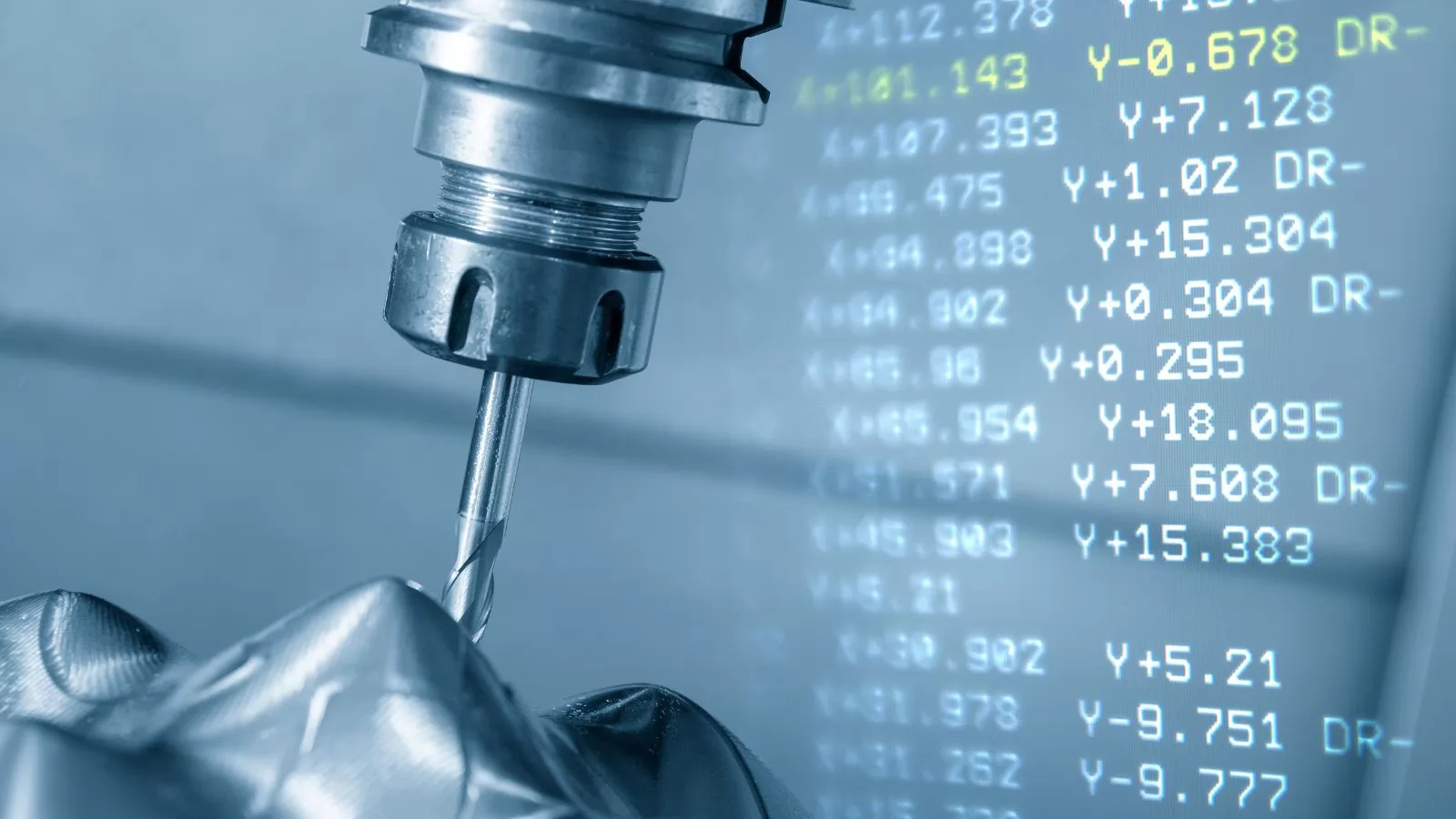
Click to view more details
The convergence of artificial intelligence (AI) and Computer Numerical Control (CNC) systems has ushered in an era of smart manufacturing, where machines operate with enhanced autonomy, predictive capabilities, and efficiency. However, this integration also amplifies cybersecurity risks, as interconnected AI-powered CNC environments become prime targets for cyberattacks that can disrupt production, compromise intellectual property, and endanger physical safety. As of November 2025, with the global CNC market projected to reach $195.59 billion by 2032, cybersecurity has emerged as a critical imperative for manufacturers. This section examines the evolving threats, vulnerabilities, mitigation strategies, regulatory landscape, real-world incidents, and future trends in securing AI-enhanced CNC systems, drawing from recent industry analyses and implementations.
AI-powered CNC environments face multifaceted threats, exacerbated by increased connectivity through IoT, cloud computing, and AI-driven automation. Cyber attackers exploit these systems to cause operational disruptions, data theft, or even physical damage.
Manufacturing remains the top targeted industry for the fourth consecutive year, with extortion (29%) and data theft (24%) as primary motives.
The fusion of AI with CNC introduces unique vulnerabilities, stemming from legacy infrastructure, over-reliance on automation, and expanded attack surfaces.
Additionally, lengthening dwell times allow attackers to lurk undetected, using legitimate tools for stealthy infiltration.
To safeguard AI-powered CNC environments, manufacturers must adopt proactive, layered defenses that blend AI-driven tools with human vigilance.
Regulations are tightening globally, with the EU's Cyber Resilience Act mandating security-by-design for AI and CNC products. In the US, frameworks like NIST 800-82 and CMMC serve as compliance benchmarks. Ethical issues include data privacy in AI training and liability for AI-induced breaches.
In 2025, manufacturing saw 29 active threat actors, with ransomware groups like those using custom tools causing widespread disruptions. For instance, attacks on OT systems halted production lines, emphasizing the need for OT prioritization. Canadian firms faced AI-driven threats, highlighting the dual-use nature of AI in attacks and defenses.
By 2026, AI will dominate cybersecurity defenses in CNC environments, with trends toward AI-first detection, automated responses, and integrated IT/OT security. Emphasis on resilience, supply chain transparency, and regulatory compliance will drive innovations, though challenges like legacy systems persist.
| Threat | Description | Mitigation |
|---|---|---|
| Ransomware | Production halts, extortion | Behavioral analytics, backups |
| AI Malware | Adaptive infiltration | AI monitoring, updates |
| Supply Chain Attacks | Vendor compromises | Zero-trust vetting |
| Legacy Vulnerabilities | Exposed OT devices | Segmentation, inventory |
In summary, cybersecurity in AI-powered CNC environments demands a proactive, integrated approach to counter escalating threats. As manufacturing evolves, balancing innovation with robust security will be essential, linking to discussions on cloud computing and ethics in subsequent sections.
Click to view more details
Cloud computing and the Internet of Things (IoT) are pivotal enablers in the integration of artificial intelligence (AI) with CNC programming, facilitating real-time data processing, remote collaboration, and enhanced operational efficiency. As of November 2025, these technologies have become integral to smart manufacturing ecosystems, allowing AI-generated G-code to be streamed, monitored, and optimized dynamically across global supply chains. The global IoT in manufacturing market is projected to exceed $1.5 trillion by 2030, driven by cloud-powered analytics that transform raw sensor data into actionable insights for CNC operations. This section explores the synergistic roles of cloud and IoT, their applications in AI-driven CNC, benefits, challenges, and emerging trends, supported by recent industry developments.
Cloud computing provides scalable, on-demand resources for storing, processing, and analyzing vast datasets essential for AI in CNC programming. It shifts computational burdens from local hardware to remote servers, enabling seamless access to powerful AI algorithms for G-code generation and optimization.
In 2025, cloud adoption in CNC has surged due to affordable sensor technology and edge computing, making advanced AI accessible to SMEs.
IoT connects CNC machines with sensors, actuators, and networks, creating a data-rich environment that feeds AI systems for real-time monitoring and decision-making. This connectivity turns isolated machines into intelligent nodes within a factory ecosystem.
By 2025, IoT-enabled CNC systems are standard in connected factories, passing data to cloud dashboards for comprehensive analytics.
The true power emerges from the triad of cloud, IoT, and AI, creating closed-loop systems that enhance CNC programming from design to execution.
This integration drives Industry 4.0 and 5.0 paradigms, emphasizing real-time decision-making and sustainability.
The combination of cloud and IoT yields transformative benefits for AI in CNC:
Despite advantages, challenges persist:
By 2030, expect deeper integrations with 5G for ultra-low latency, AI-orchestrated swarms of IoT devices, and blockchain for secure cloud data sharing. Trends like XR for remote CNC control and sustainable AI models will dominate.
| Technology | Role in AI CNC | Benefits | Challenges |
|---|---|---|---|
| Cloud Computing | Scalable AI processing, data analytics | Efficiency, collaboration | Latency, security |
| IoT | Real-time data collection, monitoring | Predictive maintenance, adaptability | Integration, privacy |
| Combined | Closed-loop optimization | 20-40% cost savings | Complexity, costs |
In summary, cloud computing and IoT are foundational to AI's revolution in CNC programming, enabling intelligent, connected manufacturing. This synergy addresses previous challenges and sets the stage for regulatory and ethical discussions in the next section.
Click to view more details
The rapid integration of artificial intelligence into CNC programming and manufacturing has outpaced regulatory frameworks, creating a complex landscape of legal, ethical, and compliance challenges. As of November 2025, governments and standards bodies worldwide are racing to establish rules that ensure safety, fairness, transparency, and accountability in AI-generated G-code and autonomous machining systems. These considerations are no longer optional—they directly impact market access, liability, funding eligibility, and public trust. This section provides a comprehensive overview of current regulations, emerging global standards, ethical dilemmas, liability frameworks, and practical compliance strategies for manufacturers deploying AI in CNC environments.
| Region | Regulation | Status | Key Requirements for AI-CNC |
|---|---|---|---|
| European Union | EU AI Act (Regulation 2024/1689) | Fully enforceable from August 2026; high-risk provisions apply Feb 2026 |
|
| United States | Executive Order 14110 + NIST AI RMF 1.0 + CMMC 2.0 Level 3 | Enforced for federal contractors; voluntary for commercial |
|
| China | Interim Measures for Generative AI + National AI Safety Governance Framework | Enforced since 2023; expanded 2025 |
|
| Canada | Artificial Intelligence and Data Act (AIDA) – Bill C-27 | Passed House Nov 2025; expected Royal Assent Q1 2026 |
|
| Japan | AI Governance Guidelines v2.0 (METI) | Voluntary but required for government subsidies |
|
Scenario: AI-generated G-code causes a $2.4M scrap of titanium aerospace part due to undetected collision.
Who is liable?
Current legal reality (2025): Courts increasingly apply product liability to AI vendors if they market "safe" autonomous systems. EU AI Act explicitly assigns responsibility to the deployer (manufacturer) for high-risk systems.
AI models trained predominantly on aluminum jobs may generate inefficient or unsafe paths for Inconel or titanium, creating material bias that disproportionately affects aerospace/defense contractors.
Cloud-based AI systems that train on customer CAD/G-code data may inadvertently leak proprietary geometries to competitors via model outputs.
WEF 2025 update: AI-CNC expected to eliminate 1.2 million manual programming jobs by 2030, but create 1.8 million new roles in AI oversight, digital twin management, and cybersecurity.
| Requirement | Action Item | Deadline (2026) |
|---|---|---|
| CE Marking for AI-CNC | Complete conformity assessment via notified body | Feb 2 |
| CMMC Level 3 | Achieve certification for DoD contracts | June 30 |
| ISO 42001 Certification | Implement AI management system | Recommended |
| Human Oversight Logs | Deploy software that records who approved AI G-code | Immediate |
| Data Localization | Ensure ITAR data never leaves US/EU for cloud AI | Ongoing |
In conclusion, regulatory and ethical considerations are now the defining factors determining which manufacturers will thrive in the AI-CNC era. Compliance is not a burden but a competitive advantage—companies that embrace transparent, human-centric AI systems today will dominate high-precision markets tomorrow. The final section will synthesize all insights into a practical roadmap for implementation.
Click to view more details
The future of CNC programming is inextricably linked to advancements in artificial intelligence, promising a paradigm shift toward fully autonomous, adaptive, and sustainable manufacturing ecosystems. By 2030, AI is projected to dominate CNC workflows, with generative models creating optimized G-code in seconds, digital twins simulating entire factories, and human roles evolving from programmers to AI orchestrators. Driven by trends like hyper-automation, multi-axis integration, and sustainability, the global CNC market is expected to surpass $195 billion by 2032, with AI contributing to 40-60% efficiency gains. This section explores emerging innovations, market forecasts, workforce transformations, potential challenges, and a visionary outlook, informed by 2025 industry analyses and expert predictions.
As AI evolves, several breakthrough technologies will redefine CNC programming by 2030, focusing on intelligence, connectivity, and sustainability.
The AI-CNC sector is poised for explosive growth, fueled by Industry 5.0 principles and global digital transformation.
| Year | Key Milestone | Projected Impact |
|---|---|---|
| 2026 | AI copilots in 50% of CAM software | 40% reduction in programming errors |
| 2028 | Quantum-AI hybrids for optimization | 60% faster complex part production |
| 2030 | Fully autonomous CNC factories | Net-zero emissions in smart manufacturing |
AI will reshape the CNC workforce, creating new roles while requiring reskilling for existing ones.
While promising, the future poses hurdles that demand proactive solutions.
By 2030, CNC programming will be predominantly AI-driven, with humans in supervisory roles within hyper-connected, self-optimizing factories. Innovations like brain-computer interfaces for intuitive design and swarm robotics for collaborative machining will emerge. The vision is a resilient, inclusive manufacturing sector where AI enables mass customization, zero-waste production, and global accessibility, ultimately democratizing high-precision fabrication for all.
In summary, the future of CNC programming with AI is bright, marked by transformative technologies that promise efficiency, innovation, and sustainability. Embracing these changes while addressing ethical and practical challenges will ensure manufacturing's evolution into a smarter, more equitable industry.
| Question | Answer |
|---|---|
| Q1. Can AI completely replace human CNC programmers? | No. AI is a tool that assists programmers by automating repetitive tasks and optimizing toolpaths. Human oversight and expertise are still critical. |
| Q2. Is AI-generated G-code safe for industrial use? | Yes, when used with validated software and proper testing. Many AI-based CAM systems include built-in simulations and error checks. |
| Q3. What skills are needed to use AI tools in CNC? | Basic knowledge of CAD/CAM, familiarity with CNC machines, and some understanding of how AI models work are beneficial. |
| Q4. Are AI G-code generators expensive? | Costs vary. Some platforms offer affordable cloud-based tools, while enterprise-level solutions can be more costly but offer deeper integration. |
| Q5. How is AI trained to generate G-code? | AI is trained using historical machining data, tool libraries, and feedback loops from simulations and real-world results. |
| Q6. Can AI generate G-code for any CNC machine? | Most AI tools support common machine types and controllers, but compatibility should be verified during implementation. |
AI-generated G-code is more than a technological leap—it's a paradigm shift in how we approach manufacturing. By combining data-driven intelligence with traditional machining expertise, AI is reshaping CNC programming into a faster, smarter, and more adaptive process. From complex aerospace components to everyday machine shop parts, the integration of AI ensures higher efficiency, lower costs, and greater innovation.
As we continue to advance in AI and automation, the synergy between human creativity and machine precision will define the future of manufacturing. Embracing AI in CNC programming today means staying competitive, agile, and ready for whatever comes next.
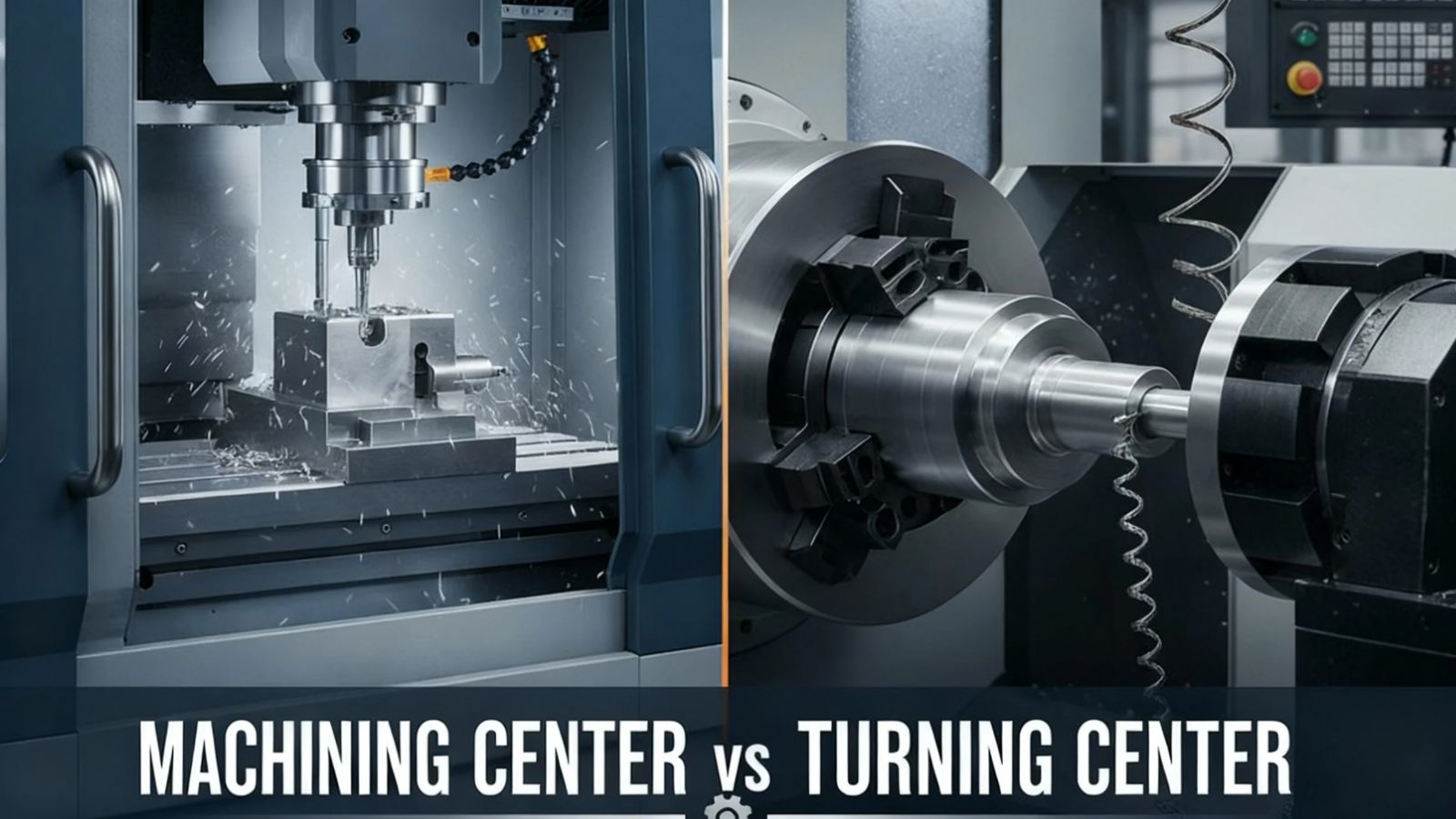

Understand the key differences between machining centers and turning centers. A guide for engineers and procurement on operational capabilities, precision, and selection criteria for CNC equipment.
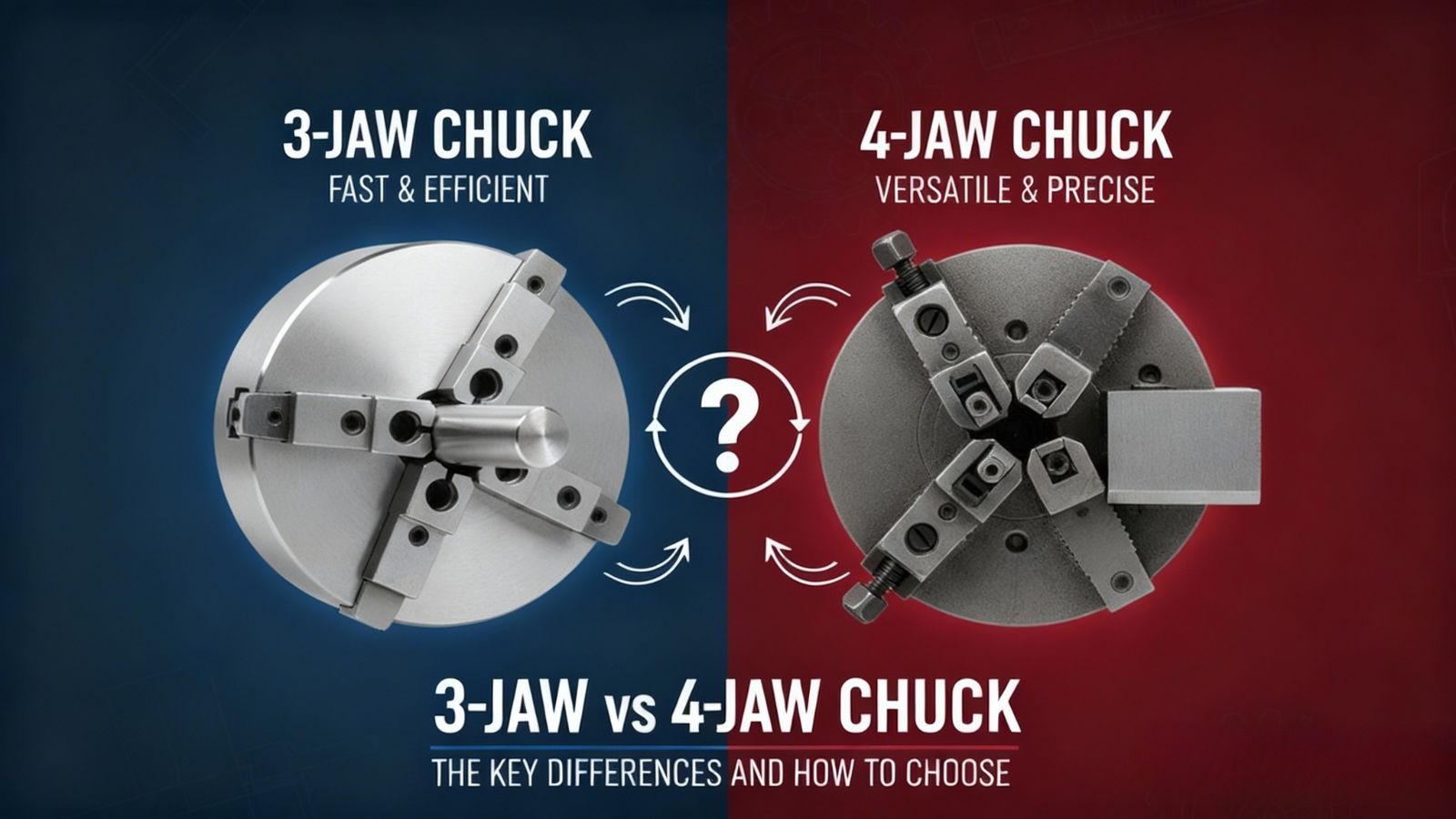

Compare 3-jaw vs 4-jaw chucks for turning operations. Learn the differences in self-centering, precision (runout), setup time, and how to choose the optimal chuck for high-volume or irregular workpieces.
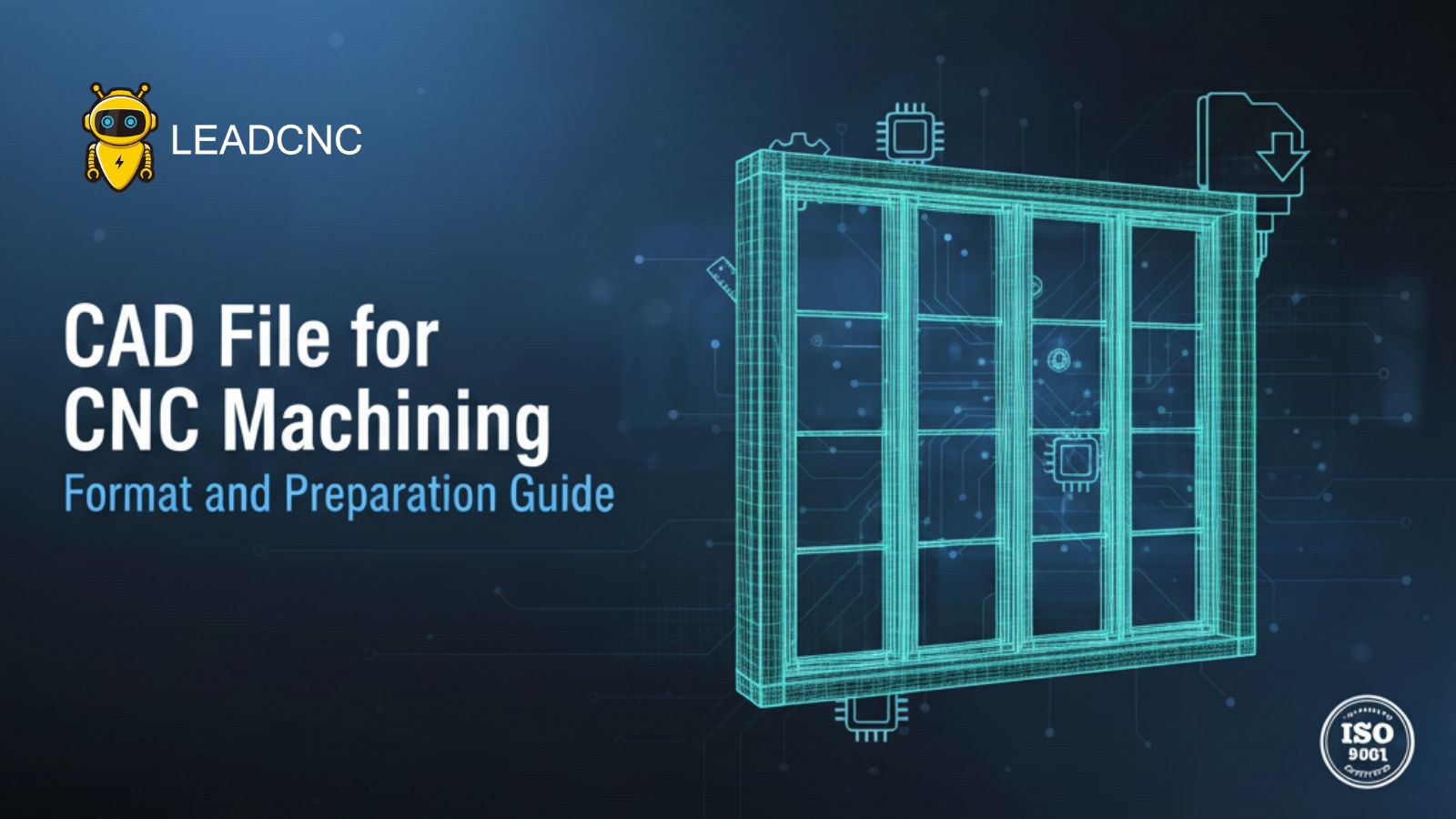

A definitive guide for engineers and procurement on preparing CAD files for CNC. Learn about essential formats (STEP, IGES), DFM practices, and geometric cleanup for precision machining.


Learn what a bar feeder is, how it works, its key components, types, and industrial applications. Discover how LEADCNC bar feeders improve CNC automation efficiency.




